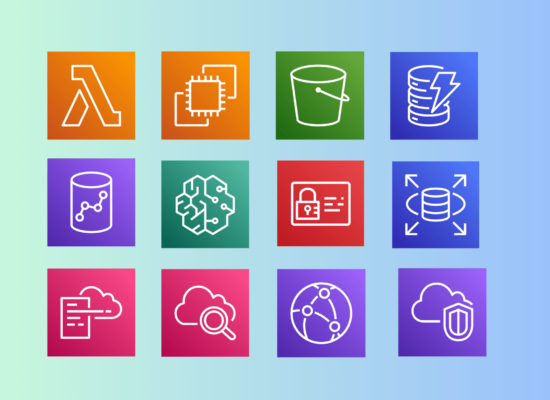Cloud migration has become a strategic priority for businesses looking to improve scalability, reduce operational costs, and enhance performance. Amazon Web Services (AWS) is a leading cloud provider with a comprehensive set of tools, services, and support to help organizations successfully migrate to the cloud. While moving to AWS can yield significant advantages, a structured approach is key to a smooth migration.
In this guide, we’ll cover each stage of the AWS migration process, from planning to post-migration optimization, ensuring your business makes the most out of the AWS cloud.
Why Migrate to AWS?
AWS offers a scalable, secure, and reliable cloud environment with global reach. Key benefits include:
- Cost Savings: AWS’s pay-as-you-go model reduces capital expenses.
- Scalability: AWS resources can easily scale with demand, allowing businesses to handle traffic spikes and accommodate growth.
- Performance: AWS provides a suite of performance-optimized compute, storage, and database options.
- Security: AWS offers advanced security tools, compliance certifications, and threat-detection services to protect your data.
With these benefits in mind, let’s dive into the migration steps.
Step 1: Define Your Business Goals and Strategy
Before starting, it’s essential to define why you’re migrating and the benefits you expect. AWS migration projects typically revolve around objectives like:
- Reducing infrastructure costs
- Improving application scalability and performance
- Enhancing disaster recovery and resilience
- Accelerating innovation through cloud-native services
AWS offers various migration frameworks like AWS Cloud Adoption Framework (CAF), which provides a structured approach to assess current capabilities and create a roadmap for the migration journey.
Action Points:
- Define the business goals and key success metrics (e.g., cost reduction percentage, performance improvement).
- Review AWS’s migration frameworks and best practices.
- Establish executive sponsorship to ensure alignment with business goals.
Step 2: Assess and Plan Your Existing Environment
Once goals are clear, the next step is to evaluate your current infrastructure and applications to understand how they will function in the AWS environment. This assessment helps identify application dependencies, security requirements, and potential challenges.
AWS provides tools like the AWS Migration Hub and AWS Application Discovery Service to assess on-premises environments and recommend migration strategies.
Key Components to Assess:
- Compute resources: Evaluate servers, CPUs, and memory requirements.
- Data: Assess databases, storage needs, and data transfer considerations.
- Network topology: Analyze network configurations, IP addressing, and bandwidth requirements.
- Security and compliance: Identify security and compliance requirements that AWS must meet.
Action Points:
- Use the AWS Application Discovery Service for automated assessment.
- Document dependencies among applications, databases, and other resources.
- Identify AWS services that will replace existing on-premises solutions (e.g., Amazon RDS for databases, Amazon S3 for storage).
Step 3: Choose a Migration Strategy
Based on your assessment, select a migration strategy. AWS recommends the 6 R’s of Migration as a framework for choosing the best approach for each workload:
- Rehosting (Lift and Shift): Moving applications without modifications; best for rapid migrations with minimal changes.
- Replatforming (Lift, Tinker, and Shift): Making slight optimizations without changing the core architecture (e.g., moving a database to RDS).
- Refactoring: Re-architecting applications to take full advantage of AWS services.
- Repurchasing: Switching to a new, cloud-native solution (e.g., moving from on-premises CRM to a SaaS platform like Salesforce).
- Retire: Shutting down unnecessary applications or services.
- Retain: Keeping some applications on-premises due to regulatory, latency, or other requirements.
Action Points:
- Determine which applications need rehosting, replatforming, or refactoring.
- Identify quick wins that align with your business goals.
- Create a detailed plan for each workload, including timelines and success metrics.
Step 4: Set Up Your AWS Environment
To set up a secure and scalable AWS environment, follow best practices for network architecture, identity and access management, and resource allocation. AWS provides tools and services to establish a solid foundation for the migration.
Key Components to Set Up:
- Amazon VPC (Virtual Private Cloud): Create a virtual network for isolation and control over networking.
- AWS IAM (Identity and Access Management): Set up user roles, permissions, and access control.
- AWS Organizations: Establish management structures for multi-account setups to isolate resources and manage permissions.
- AWS Security and Compliance: Use AWS Shield and AWS GuardDuty for threat detection and protection.
Action Points:
- Set up VPCs, subnets, and security groups as per your network design.
- Configure IAM policies to ensure least privilege access for users and services.
- Establish monitoring and logging via AWS CloudTrail and Amazon CloudWatch.
Step 5: Migrate Data and Applications
AWS provides a range of tools and services to transfer data, from small-scale applications to large, complex datasets. Here’s a breakdown of common migration methods:
- AWS Database Migration Service (DMS): Migrate databases with minimal downtime. It supports homogeneous migrations (e.g., Oracle to Oracle) and heterogeneous migrations (e.g., SQL Server to MySQL).
- AWS Server Migration Service (SMS): Automate, schedule, and monitor server migrations.
- AWS Snowball: Transfer large datasets securely using physical devices shipped to AWS.
- Amazon S3 Transfer Acceleration: Use S3 Transfer Acceleration for fast, secure data uploads to Amazon S3.
Action Points:
- Choose the most suitable migration tool for each workload.
- Plan a phased migration to minimize disruptions to end-users.
- Conduct testing in a sandbox environment to ensure compatibility and performance.
Step 6: Validate and Test
After migration, validate that applications and data function as expected in the AWS environment. Testing ensures that the migrated workloads meet performance, availability, and functionality standards.
Testing Areas:
- Functionality Testing: Ensure applications behave as expected in the AWS environment.
- Performance Testing: Benchmark applications to confirm they meet performance requirements.
- Security Testing: Validate that IAM policies, VPC configurations, and other security measures are in place.
- Data Validation: Confirm data integrity and verify that all data was successfully migrated.
Action Points:
- Conduct end-to-end testing with realistic user scenarios.
- Use CloudWatch for performance monitoring and issue identification.
- Implement automated testing to catch issues quickly and continuously.
Step 7: Optimize Post-Migration
Post-migration optimization allows you to refine resources and improve cost efficiency. AWS offers tools to help manage and optimize your cloud environment.
Key Areas to Optimize:
- Cost Management: Use AWS Cost Explorer and AWS Budgets to track and manage spending.
- Performance Tuning: Identify opportunities to leverage AWS-native features like Elastic Load Balancing and Auto Scaling to optimize performance.
- Security Enhancements: Continuously improve security with AWS Shield, Amazon GuardDuty, and AWS Security Hub for real-time threat detection and compliance monitoring.
Action Points:
- Set up AWS Trusted Advisor for ongoing recommendations on cost savings, security, fault tolerance, and performance.
- Use AWS Compute Optimizer to identify underutilized instances and right-size resources.
- Regularly audit security practices and align them with evolving compliance requirements.
Step 8: Manage and Operate
Once migration is complete and optimized, establish a management and operation framework to keep your AWS environment secure, cost-effective, and resilient.
Key Areas to Manage:
- Resource Monitoring: Set up continuous monitoring with Amazon CloudWatch and create dashboards for visibility.
- Backup and Recovery: Leverage AWS Backup to automate data backup and recovery tasks.
- Automated Management: Use AWS Systems Manager to automate common management tasks and maintain operational consistency.
Action Points:
- Implement regular audits to manage and optimize costs.
- Set up recovery plans and use AWS CloudFormation for disaster recovery automation.
- Conduct training and upskilling to keep your team proficient with AWS best practices and evolving services.
Closing Thoughts
Migrating to AWS can significantly impact business agility, cost savings, and growth. While the migration process may seem complex, a well-defined approach can streamline the journey and minimize risks. By following these steps, businesses can ensure a smooth transition to AWS and maximize the value derived from the cloud. Remember, AWS also offers extensive resources, including the AWS Migration Hub and AWS Partner Network (APN), to support every phase of migration, ensuring a successful cloud journey.








No Comment! Be the first one.